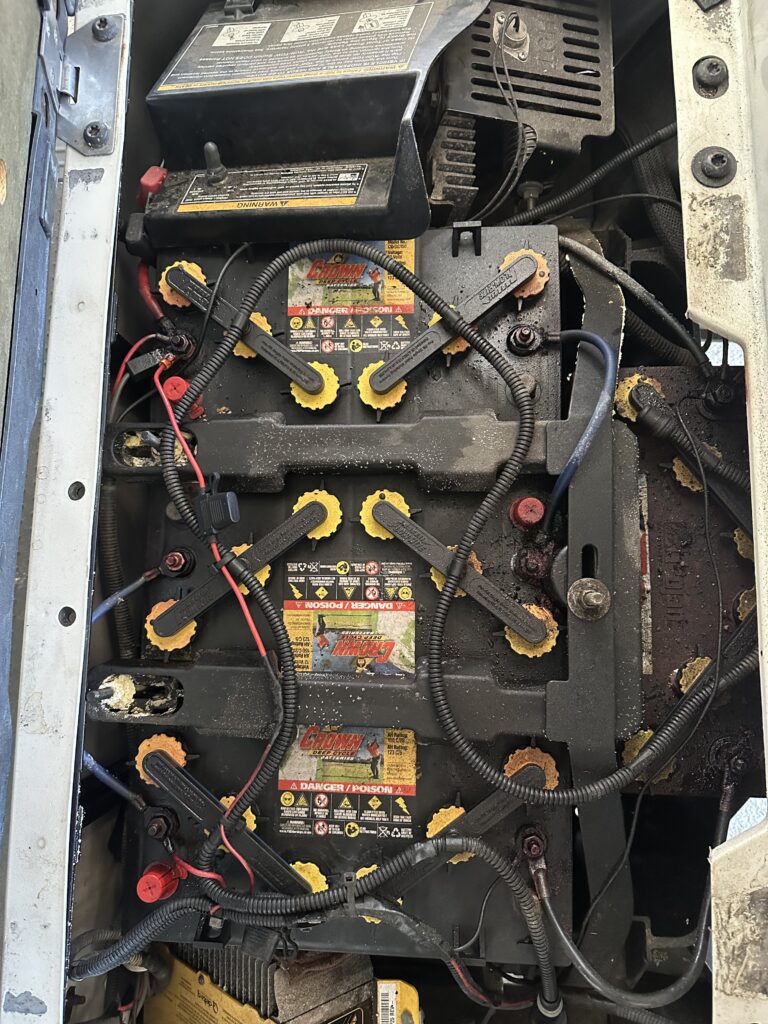Maintaining golf cart flooded lead-acid batteries effectively involves regular and careful attention to several key aspects. Here’s a comprehensive guide:
Regular Maintenance Tasks
1. Check Water Levels:
- Frequency: Check water levels every month or more frequently in hot climates.
- Procedure: Ensure the plates are submerged in water but avoid overfilling. Use distilled water to top up.
2. Cleaning:
- Frequency: Clean the batteries every month.
- Procedure: Use a solution of baking soda and water to neutralize any acid. Clean the terminals and connections to prevent corrosion.
3. Charging:
- Frequency: Charge the batteries after every use.
- Procedure: Use a proper charger designed for flooded lead-acid batteries. Avoid deep discharges (below 50% capacity).
4. Equalization:
- Frequency: Equalize the batteries every 30-60 days.
- Procedure: Use the equalization setting on your charger to balance the cells and prevent stratification.
Important Practices
1. Temperature Monitoring:
- Avoid Extreme Temperatures: Store and operate the batteries in environments where temperatures do not exceed 80°F (27°C). Excessive heat accelerates water loss and battery aging.
2. Inspection:
- Look for Signs of Damage: Regularly inspect for cracks, leaks, or swelling in the battery case.
3. Use Proper Charging Techniques:
- Avoid Overcharging: Follow the charger manufacturer’s guidelines to avoid overcharging, which can cause excessive gassing and water loss.
- Full Charge Cycles: Ensure batteries are fully charged before use to maximize life and performance.
4. Discharge Management:
- Avoid Deep Discharges: Try to keep the battery charge level above 50%. Deep discharges shorten battery life.
- Regular Use: Regularly use and recharge the batteries to keep them in good working condition.
Safety Tips
1. Wear Protective Gear:
- Use gloves and safety glasses when handling batteries to protect against acid splashes.
2. Ventilation:
- Charge batteries in a well-ventilated area to prevent the buildup of explosive gases.
3. Proper Disposal:
- Follow local regulations for the disposal of old or damaged batteries.
Troubleshooting Common Issues
1. Corrosion:
- Solution: Clean terminals with baking soda and water, apply a thin coat of petroleum jelly to prevent future corrosion.
2. Low Water Levels:
- Solution: Regularly check and maintain water levels with distilled water only.
3. Poor Performance:
- Solution: Ensure proper charging, perform equalization charges, and avoid deep discharges.
Summary
Maintaining golf cart flooded lead-acid batteries requires regular checks and maintenance. Key tasks include monitoring water levels, cleaning terminals, charging properly, equalizing the batteries, and ensuring proper storage conditions. By following these guidelines, you can maximize the lifespan and performance of your golf cart batteries.
Cables and batteries (see image below) are not in good condition at all and will cause you to get stranded very soon.

